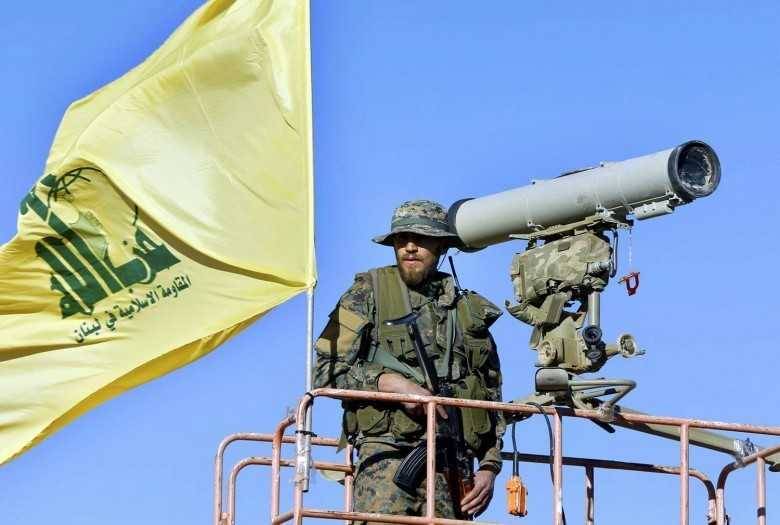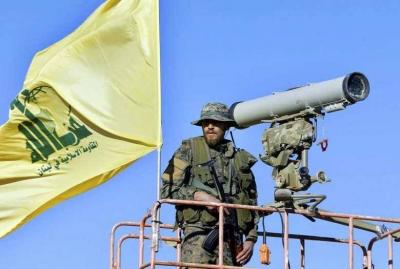Since Hezbollah opened the southern Lebanon front against Israel following the Al-Aqsa Flood in support of Gaza and its inhabitants, its military leadership has been working on developing capabilities to address vulnerabilities and prepare for the coming war, keeping pace with the developments imposed by Tel Aviv on the battlefield, as reported by the Kuwaiti newspaper "Al-Rai." What is happening in the decision-making corridors? What level of preparedness has emerged, not necessarily for a major battle, but to be ready for the nature of confrontations that may occur in the coming days, weeks, years, or decades?
After 22 years of Israeli occupation of Lebanon, the strongest army in the Middle East withdrew from most of the Lebanese territories in 2000 for several reasons, the most significant of which was the effectiveness of guerrilla warfare through suicide operations, explosive devices, and ambushes that posed a challenge to the capabilities of the occupying army in the terrain of southern Lebanon. This led to a significant positive psychological and moral impact on Hezbollah and its environment and a negative one on soldiers and society in Israel, especially with the rising number of casualties and the absence of a clear victory, as well as the failure to achieve strategic objectives such as establishing a buffer zone and eliminating the resistance.
Hezbollah built its capabilities on traditional options to confront Israel based on guerrilla warfare, which proved successful in the presence of elements and officers of the occupying army on Lebanese soil. However, the July 2006 war imposed a completely different reality and exposed Hezbollah's weaknesses in facing Israeli military power, particularly the destructive capabilities through which Tel Aviv inflicted severe damage on the military and civilian infrastructure, residential buildings, towers, and entire villages, as well as on Lebanon's civil infrastructure.
Israel relied on a strategy of overwhelming force not only as a deterrent against Hezbollah but also to send a message to its regional adversaries, showcasing its military capabilities and its readiness to use them. Immediately after the ceasefire, a new military campaign began to modernize Hezbollah's capabilities from 2006 to 2023, aimed at developing internal organization, expanding combat units, and enhancing weapons to counter Israeli destructive power, achieving a balance with Tel Aviv's air capabilities and superiority, and mitigating the severe destruction that accompanied the 2006 war.
Iran, as a primary supporter of Hezbollah, provided financial assistance, training, and military equipment that saw advancements over the years, reaching sophisticated weapon systems, including drones, laser-guided anti-tank missiles, medium and long-range precision missiles, and communication technology. Moreover, the Syrian war allowed Hezbollah and Iran to test new weapons, train on them, and enhance military capabilities and combat expertise in urban warfare and open combat.
Hezbollah developed its fighters' skills through rigorous training programs for its special units, encompassing not only traditional warfare tactics but also asymmetric warfare techniques, cyber warfare capabilities, and the use of drones for surveillance and attacks, according to "Al-Rai." It adopted a more decentralized command structure, allowing for greater flexibility and adaptability on the battlefield to enhance tactical innovation and operational effectiveness. It invested in its intelligence apparatus to improve the ability to collect, analyze, and continuously update information and act on it to enhance strategic planning, keeping pace with a sophisticated, evolving adversary supported by advanced global powers collaborating with Israel.
However, the October 2023 war presented itself, and Hezbollah was more prepared than in 2006 but not at the level it aspired to after learning lessons from about six months of fighting. The party succeeded in imposing deterrence on Israel and obligating it to rules of engagement within acceptable geographic limits, recognizing Hezbollah's strategic evolution and that all weapons possessed by Iran were at its disposal, especially since the communication and logistical support channels had never ceased since the beginning of the war on Gaza; these channels had intensified after Hezbollah opened fire on Israel.
However, another development occurred in this battle: Israel showcased capabilities utilizing artificial intelligence, cutting the resistance's landlines, penetrating them, disrupting GPS, and employing new precise missiles that penetrate concrete layers to explode inside rooms, as seen in the assassination operation of Hamas leader Saleh Al-Arouri and other resistance members in various homes in southern Lebanon and the Beqaa Valley. This compelled Hezbollah to enhance its armaments amidst the battle, storing precise and destructive missiles, particularly hypersonic missiles and drones with very explosive warheads capable of penetrating deep into the enemy's interior to strike military facilities housing command and control centers and strategic decision-making sites.
Additionally, Hezbollah managed to acquire stealth drones that evade radar detection, which do not produce any sound as they operate with turbine engines instead of propellers, infiltrating any area without detection until it is too late to react after striking the target. Moreover, the party developed the "Volcano" missiles that it uses on the front lines to become smarter and more precise, aiming to inflict massive destruction comparable to Israeli destructive power used against the frontline villages in southern Lebanon.
Hezbollah is working on developing anti-aircraft weapons to break the Israeli superiority and intercept drones used for targeted killing and intelligence gathering and updating. This is in line with the evolution of the enemy, employing artificial intelligence in new weapons to close, or at least reduce, vulnerabilities and impose a balance of terror on multiple levels.
It is a continuous battle that will not stop; as Israel enhances its capabilities, Hezbollah attempts to keep up with it to mitigate damage to its environment and inflict similar damage when necessary on the opposing Zionist community. This stems from the belief that artificial intelligence represents the warfare of the coming decades, necessitating the modernization of weapons and keeping pace with advancements, learning lessons from ongoing wars on the Gaza, Lebanon, and Yemen fronts, and seeking to close vulnerabilities and identify the weaknesses of Israel and its society, especially as Israeli societal extremism has reached unprecedented levels and the threat of war on Lebanon remains looming.




